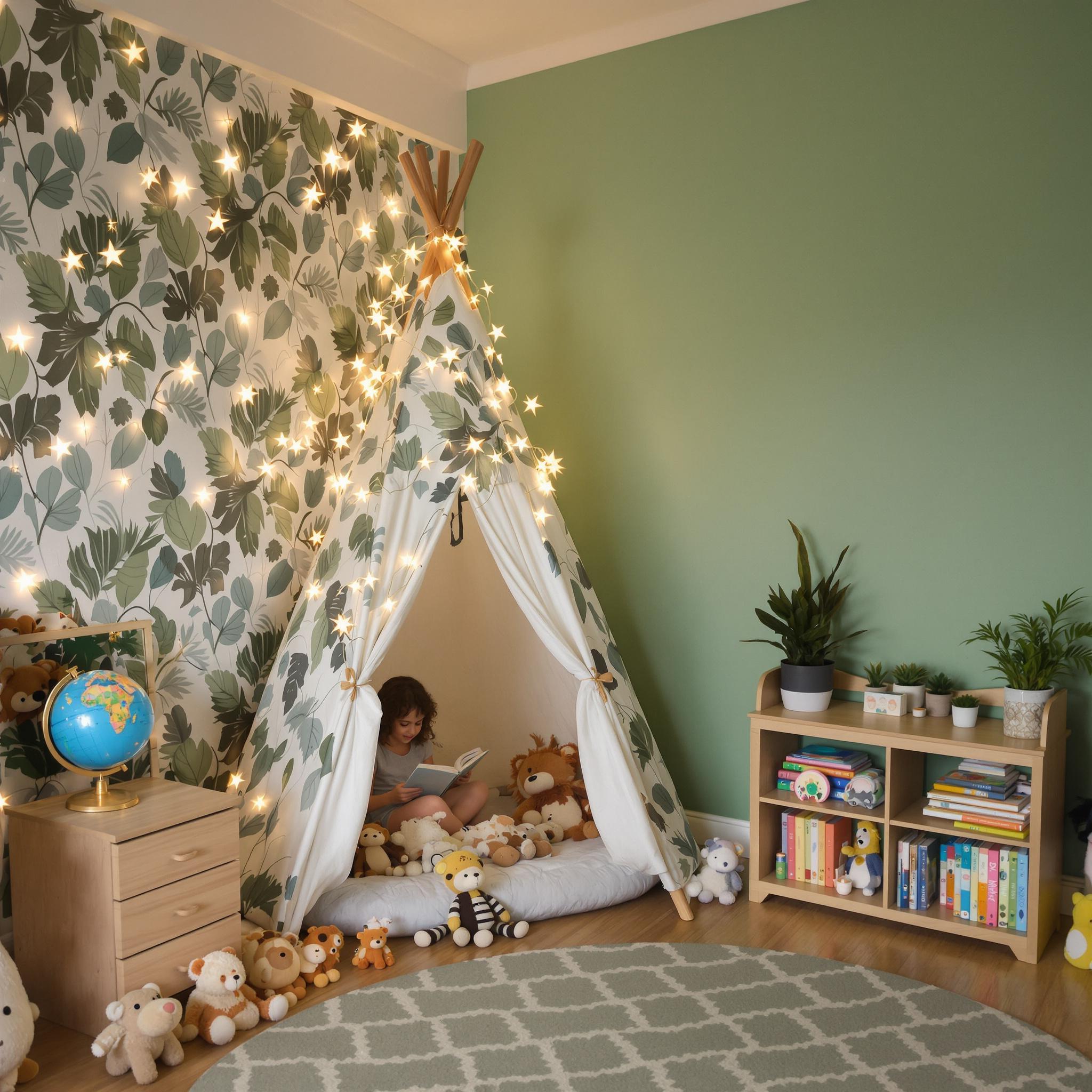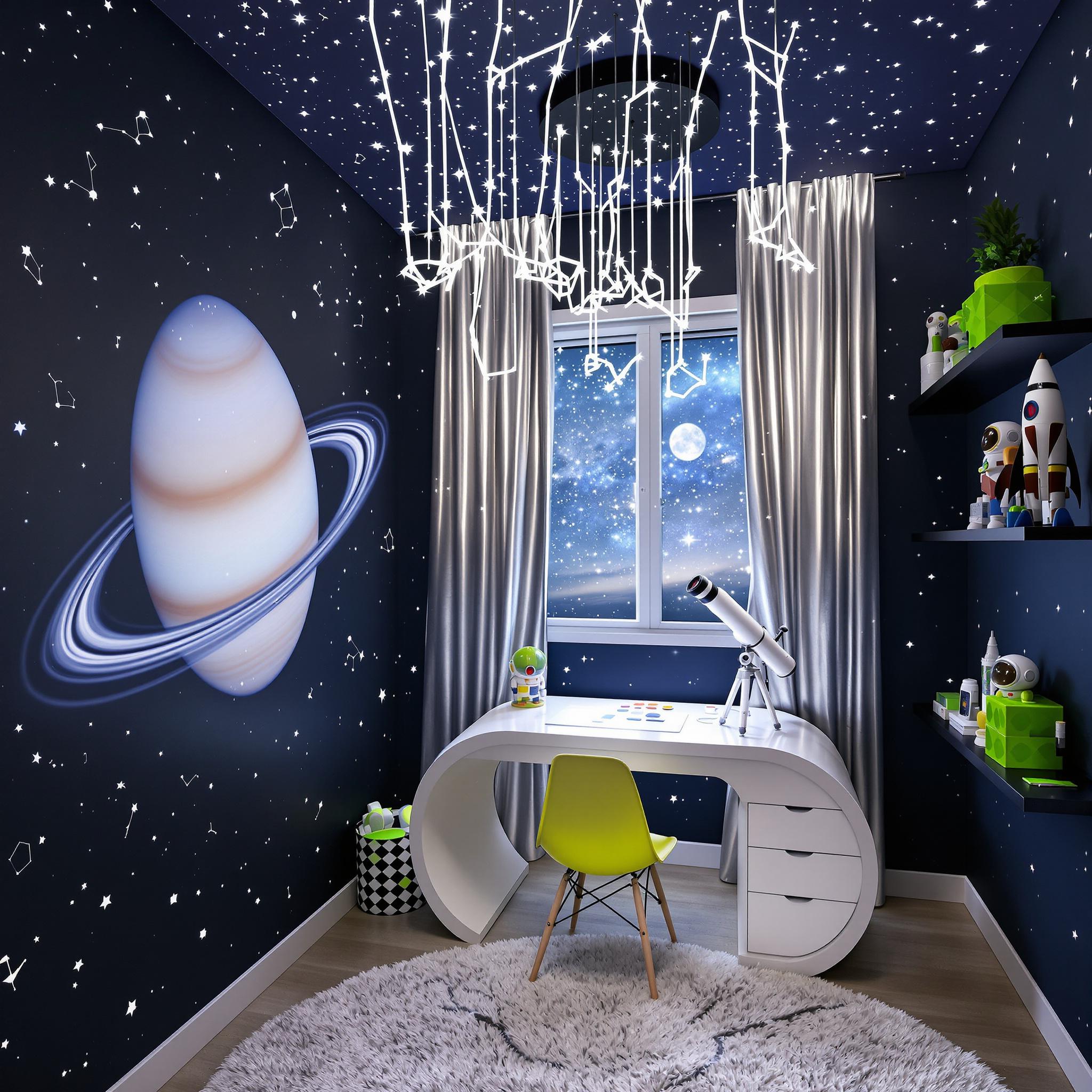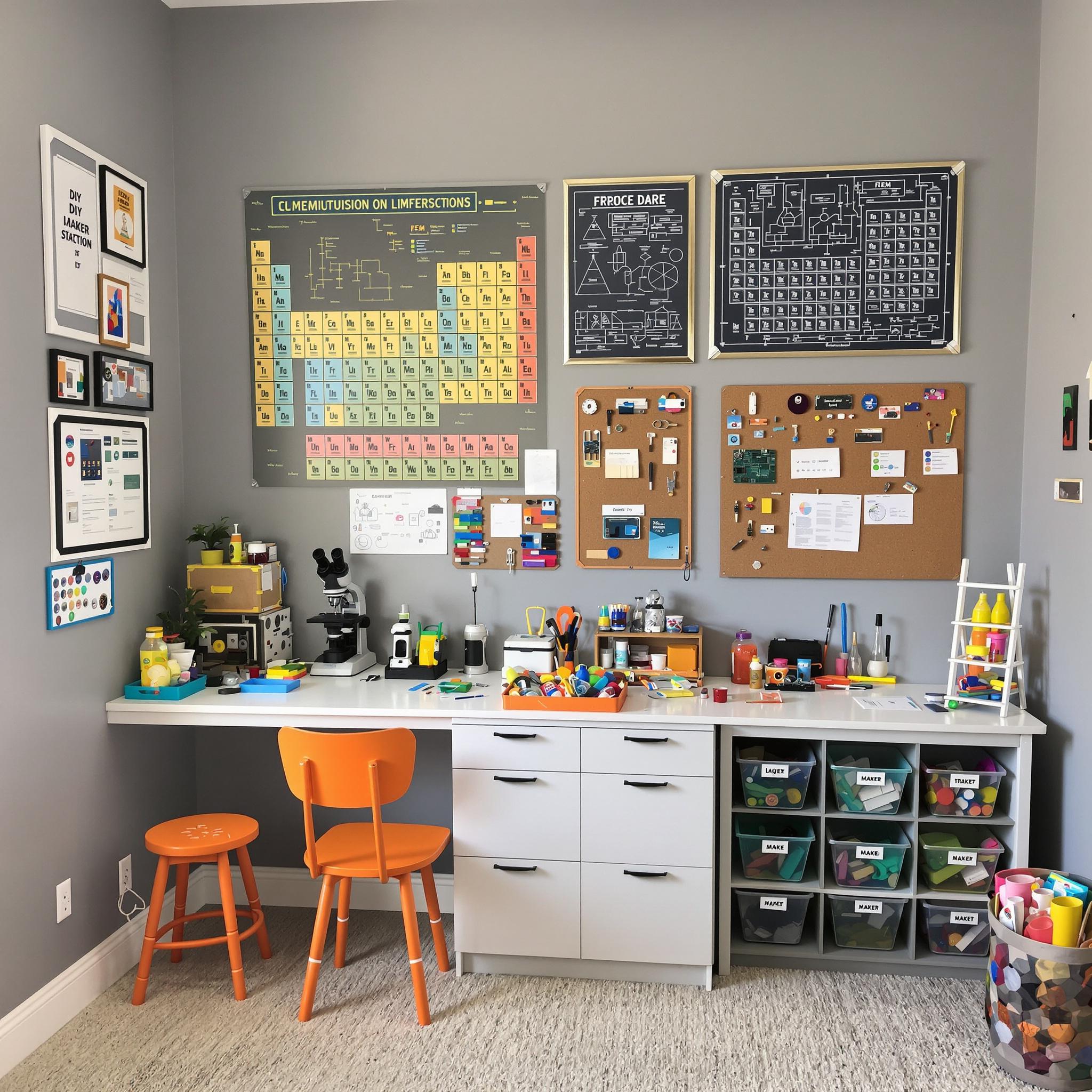What Are Themed Kids’ Rooms and Why Do Parents Love Them?
Themed kids’ rooms are spaces designed around a specific idea or concept. Think jungle adventures, space exploration, or fairy tale castles. These rooms reflect a child’s interests and spark joy every day. Parents love them because they combine fun with functionality. A room themed around dinosaurs or princesses feels magical to a child. It also creates a personal space they can call their own.
Kids often change their favorite things as they grow. One year it’s pirates, the next it’s superheroes. Themed rooms adapt to these shifts. They let parents design spaces that evolve alongside their child. Many parents find themed rooms help their kids feel more connected to their home. This connection builds confidence and comfort.
How Themed Rooms Boost Creativity and Imagination
A themed room is more than decor. It’s a launchpad for creativity. Imagine a child pretending to camp under star decals on the ceiling. Or reading books in a teepee fort in their woodland-themed room. These small details encourage imaginative play. They turn everyday moments into adventures.
Decorating with themes also lets kids express themselves. A car-themed room might feature race track borders and checkered flags. For a young artist, a creative studio vibe with easels and bold colors works well. These choices reflect their personality. Over time, kids learn to make decisions about their space. This boosts their sense of individuality.
I remember helping my niece pick out a mermaid-themed room. She chose seafoam green walls and shell-shaped shelves. Watching her dive into pretend underwater worlds made me realize how powerful themed spaces can be. Her room wasn’t just a place to sleep—it was her personal ocean.
Psychological and Developmental Benefits of Themed Rooms
Themed rooms do more than look cute. They help children develop important life skills. A personalized space fosters independence. When kids feel ownership over their room, they take pride in keeping it tidy. This teaches responsibility without nagging.
Cognitive growth also gets a boost. Themes often include educational elements. For example, a space-themed room might have glow-in-the-dark constellations. These decorations teach kids about stars and planets. Similarly, a world map mural sparks curiosity about geography. Learning becomes part of their daily life.
Parents often notice changes in behavior too. A calm, nature-themed room with soft greens and browns can reduce stress. Bright colors in a superhero room energize kids for playtime. Matching the theme to a child’s temperament helps create balance.
Budgeting for a Themed Kids’ Room
One concern many parents have is cost. Themed rooms don’t need to break the bank. Start small with key pieces like bedding or wall decals. These items set the tone without requiring major renovations. Thrift stores and online marketplaces are great for finding affordable decor.
Here are some budget-friendly tips:
- Use paint instead of wallpaper for walls.
- DIY projects like painting wooden letters for names.
- Swap out old toys for ones matching the theme.
When I helped my friend redo her son’s room, we stuck to a tight budget. We used stencils to create a city skyline on one wall. He loved it—and it cost less than $20.
Choosing Age-Appropriate Themes
Age matters when picking a theme. Toddlers enjoy bright colors and simple shapes. Preschoolers love characters from movies or TV shows. Older kids prefer themes tied to hobbies or interests like sports or music.
Avoid infantile designs for older kids. A nursery rhyme theme won’t work for a preteen. Instead, opt for timeless ideas like nature or travel. These appeal across age groups. If your child loves animals now, consider a safari theme. It grows with them by adding mature accents later.
Future-Proofing Your Child’s Room Design
Kids grow fast. Their interests change even faster. To avoid frequent updates, choose flexible themes. Neutral base colors let you swap accessories easily. For instance, a nautical theme works for toddlers and teens alike. Just switch out stuffed whales for sleek boat models.
Consider modular furniture too. Bunk beds or loft beds adapt to different needs. Add storage bins that match the theme but can hold anything. This keeps the room functional through all stages of childhood.
My sister once redesigned her daughter’s ballet-themed room into a chic dance studio. She kept the barre and mirrors but updated the color scheme. The result? A fresh look that still honored her daughter’s passion.
Popular Themes and Creative Ideas for Every Interest
Let’s jump into some awesome room themes. Whether it’s for kids, teens, or even yourself, these ideas will spark creativity. From galaxy vibes to jungle getaways, there’s something for everyone. Fun fact: I once helped my niece turn her plain room into a fairy tale castle. She still talks about it like it happened yesterday!
Space Exploration: Blast Off to Another Dimension
Dreaming of stars and planets? A space-themed room is a winner. Start with dark colors and add pops of cosmic hues. Navy blue walls with silver, gold, or neon green accents work great. Use glow-in-the-dark stickers for constellations or paint a mural of Saturn.
For furniture, go sleek and futuristic. A desk shaped like a spaceship control panel? Yes, please. Add astronaut helmets, model rockets, or a telescope if you’ve got a clear view of the sky. DIY idea: Make a solar system mobile using black poster board and acrylic paints. It’s fun and relaxing.
Bonus: Make it educational. Hang a map of the solar system or posters about black holes. Science doesn’t have to be boring. Kids love learning when it’s fun.
Jungle Adventure: Bring the Wild Indoors
Imagine stepping into a lush jungle every time you enter a room. Sounds cool, right? Start with earthy tones—greens, browns, and yellows. Leafy wallpaper works well. On a budget? Stencil leaves onto the walls instead.
Furniture should feel natural. Wood or rattan pieces fit perfectly. Add a hammock chair in the corner for a cozy touch. Decorate with animal figurines, faux plants, and tribal prints. String lights wrapped around branches create a magical twilight effect.
DIY tip: Make a vine canopy using artificial ivy garlands. Or paint a leopard print on a plain pillowcase. For a quirky twist, frame macro photography of bugs. And don’t stop at looks—add books about ecosystems or set up a terrarium. Watching plants grow teaches responsibility.
Fairy Tale Castles: Where Magic Lives
Who says fairy tales are just for bedtime? Turning a room into a castle is easier than you think. Use soft pastels like lavender, pink, and baby blue. Add metallic accents—gold crowns, silver mirrors—for a regal feel.
Furniture should feel storybook-worthy. A canopy bed with sheer curtains is perfect. Velvet chairs or poufs add elegance. Decor can include vintage clocks, ornate frames, and a mini chandelier. Even a small one makes a big impact.
Pro tip: Get crafty. Decoupage a wooden box to look like a treasure chest. Fill it with faux jewels or keepsakes. Or paint a dragon mural—it’s easier than it sounds with stencils.
Education fits here too. Add classic fairy tale books or maps of mythical lands. My niece loved keeping a “quest journal” for her imaginary adventures. It kept her busy for hours.
Sports Arenas: Game On!
Sports fans, this one’s for you. Turn a room into a personal arena. Pick a team color—red for soccer, green for baseball—and build around it. Bold stripes or checkered patterns mimic jerseys and fields.
Furniture should be comfy and durable. Bean bags or recliners are great for watching games. Shelves can display trophies, signed balls, or jerseys. Keep everything organized so the room stays tidy.
DIY idea: Make a custom scoreboard using chalkboard paint. It’s both decor and functional. Another idea? Sew a quilt from old sports jerseys. It’s sentimental and practical.
Education sneaks in here too. Maps of tournament locations or infographics about player stats spark curiosity. Teaching kids teamwork through sports? That’s a lesson worth cheering for.
STEM-Inspired Spaces: Nerdy But Cool
Science nerds, this theme’s for you. STEM rooms inspire curiosity and creativity. Start with neutral colors like gray or white. Add bright pops of orange, teal, or electric blue. These shades mimic lab gear and tech screens.
Lab tables or desks with storage are ideal. Stock them with microscopes, circuit kits, or LEGOs for tinkering. Wall art featuring periodic tables, DNA diagrams, or math equations adds personality. Once, I saw someone frame an International Space Station blueprint—it looked amazing.
DIY idea: Make periodic table coasters using tiles and markers. Or create a shadow box with gears and wires. It’s like a mini museum exhibit.
Education blends naturally here. Posters about scientific breakthroughs or interactive globes encourage exploration. Set up a “maker corner” with recyclables for building projects. Seeing someone light up after completing a DIY circuit? Priceless.
Wrapping Up This Thematic Journey
There you go—a roundup of themes and ideas for different interests. Each concept offers endless ways to customize. The goal isn’t just looks—it’s creating a space that inspires and reflects who you are. So grab your tools, let your imagination run wild, and start transforming those walls into something special.
Putting It All Together: Final Steps for a Flawless Themed Room
Alright, you’ve picked the theme, sketched some ideas, and probably spent hours on Pinterest. Now it’s time to bring it all together. But before you jump in, let’s talk about how to pull it off without losing your mind—or your wallet. Trust me, I’ve been there. Once, I tried making a jungle-themed room for my niece. Halfway through, I realized the bunk bed wouldn’t fit. Rookie move!
First, measure everything twice. Seriously, triple-check if you have to. Kids’ rooms are smaller than they look, especially with bulky furniture like beds or dressers. Grab a tape measure and write down the dimensions—floor space, wall height, even those weird corners. And don’t forget door clearance! I once had to take apart a dresser because it wouldn’t fit through the door. Lesson learned.
Next, think about durable materials. Kids are tough on stuff. They spill drinks, climb on furniture, and generally test limits. Go for stain-resistant rugs, washable curtains, and semi-gloss paint—it’s easier to clean than matte. Here’s a tip: choose furniture with rounded edges. It’s safer for kids who haven’t mastered not running into things.
Involving Your Little Co-Designer
Now comes the fun part: getting the kiddo involved. Kids love being in charge, even if it’s just picking out pillowcases. Give them choices, but keep it manageable. For example, “Do you like these rocket decals or these astronaut stickers?”
This does two things: it makes them feel important, and it helps you avoid decision overload. One time, my nephew said he wanted rainbow walls. Seven colors felt like too much, so we did a mural with rainbow hot air balloons instead. He loved it, and I didn’t lose my sanity.
Let them help with small tasks, too. Arranging books or sticking decals gives them a sense of ownership—and saves you from doing all the work. Just supervise closely, especially with tools or ladders. Safety always comes first.
Maintenance Tips & Future-Proofing the Theme
A few months later, the room looks amazing. But don’t celebrate just yet. Keeping it fresh takes effort. Here’s how to stay on top of things:
- Regular Cleaning: Dust shelves, vacuum carpets, and wipe surfaces often. A clean room feels cozier and lasts longer.
- Rotate Accessories: Switch decor every few months. Change throw pillows or rotate toys in bins to keep things interesting.
- Fix Damage ASAP: Fix scratches or peeling wallpaper quickly. A little touch-up paint can save you from bigger problems later.
What happens when your child outgrows the theme? It’s bound to happen. My daughter went from princess castles to dinosaurs in no time. The trick? Use easy-to-update elements. Wall decals peel off, bedding can be swapped, and artwork can change. Avoid permanent changes like custom murals unless you’re ready to repaint later.
Updating doesn’t mean starting over. Sometimes adding neutral tones while keeping a few nostalgic pieces works well. It’s a way to honor their past while embracing their new interests.
Wrapping Up: Creating a Space They’ll Love
Designing a themed kids’ room isn’t just about looks. It’s about creating a space where imagination grows and memories form. Involve your child, plan carefully, and don’t stress if it’s not perfect. Rooms change, just like kids do. What matters is that the space feels like theirs and brings them joy. That’s what home is all about.
Frequently Asked Questions
- How do I choose a theme my child will enjoy long-term?
Pay attention to their interests. Nature or space themes tend to age well, unlike character-based ones that might feel old fast. - What’s the best way to incorporate lighting?
Mix ambient, task, and accent lights. String lights add charm, and a desk lamp is great for homework. Skip harsh overhead lights if you can. - How can I stick to a budget?
Focus on key items like bedding and wall art. Shop secondhand for furniture and try DIY projects. Thrift stores are treasure troves! - Is it okay to mix themes?
Yes! Just make sure there’s a unifying element, like a consistent color scheme, to tie it all together. - What if my child wants to change the theme frequently?
Use flexible decor like removable decals or interchangeable accessories. This lets you adapt without major changes. - How do I childproof the room?
Anchor heavy furniture, cover outlets, and use cordless window treatments. Soften sharp edges and keep dangerous items out of reach. - Can I use bold colors in a small room?
Sure, but use them sparingly. Bold colors work better as accents. Mirrors can also make small spaces feel bigger. - Should I hire a professional designer?
If you can afford it, go for it! Otherwise, plenty of online resources and tutorials can help you DIY. - How do I deal with limited storage?
Use vertical space with shelves and under-bed storage. Multi-functional furniture, like ottomans with hidden compartments, is a lifesaver. - Any tips for eco-friendly design?
Choose sustainable materials like bamboo or recycled plastic. Repurpose old items creatively and use non-toxic paints. Every bit counts!



